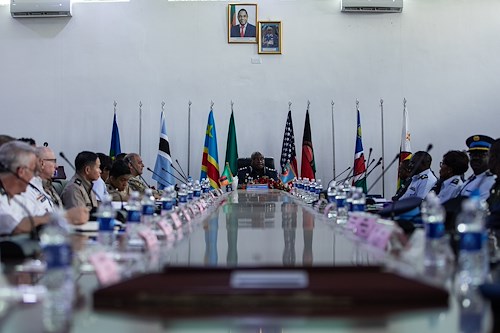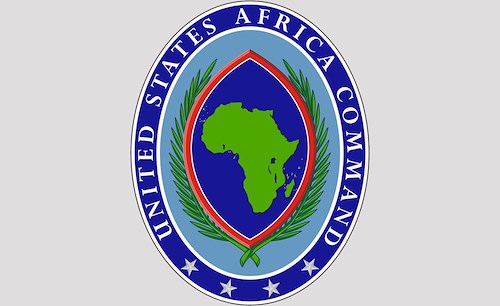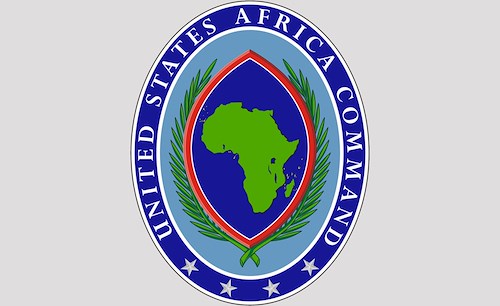Across east Africa, the use of Special Operations Forces as a means to enhance the capability to protect civilians is a growing trend. Each nation has a unique mission and purpose for its SOF component, and no two look exactly the same. However, SOF in nearly every nation share a common set of experiences as they continue to grow and develop their individual capacities.
The Tanzania People’s Defence Force and Special Operations Command Africa co-hosted the East Africa Special Operations Conference in Zanzibar, Tanzania from 17-19 January, to provide a forum for each of the participants to come together and share unique perspectives in order to build on partnerships that strengthen the collective effort to combat shared threats.
The theme of the conference was “Capable Special Operations Forces for the Challenges of Tomorrow.” Participants from Burundi, Ethiopia, Kenya, Seychelles, Somalia, Tanzania and Uganda took part in the conference, the first time military representatives of these nations have come together in one setting to discuss lessons learned from each perspective.
According to the U.S. Defense Attaché Office in Dar es Salaam, Tanzania, the EASOC initiative has provided the DAO with the first real opportunity to engage senior TPDF Special Forces in over a decade and will help solidify this developing relationship.
SOCAFRICA is the Special Operations component of US Africa Command and works as part of an integrated theater strategy to combat terrorism and advance US Africa Command’s strategic objectives. They are collocated with USAFRICOM in Stuttgart, Germany.
In 2009, President Barack Obama said during a speech in Accra, Ghana that, in the long term, it is Africans who are best able to address African security challenges. Secretary of State Hillary Clinton echoed this comment in 2012, when she said that global problems need African solutions—and African contributions as well.
USAFRICOM's work is guided by U.S. policy, primarily the Presidential Policy Directive for Sub-Saharan Africa, which outlines President Barack Obama's vision on U.S. policy toward Africa and four focus areas: strengthening democratic institutions; promoting economic growth, trade and investment; advancing peace and security; and promoting opportunity and development.
While USAFRICOM's focus is on advancing peace and security, the other three pillars require a secure environment to thrive.
Gen. Carter F. Ham, the commander of USAFRICOM, said in a 2012 speech at Brown University in Providence, RI, that his mission is to advance the United States security interests in Africa, and the best way do that is by strengthening the defense capabilities of African countries so that they are increasingly capable of providing for their own defense and of contributing to regional security and stability.
SOF are often the ideal force for capacity-building missions, primarily because they are configured to employ a low-cost, light footprint and innovative approach as pillars of their operations.
According to US Special Operations Command Publication 1, Doctrine for Special Operations, Special Operations are “special” because their success depends on long term relationships and knowledge of the cultural, societal, economic, and political environments in which they occur.
Rear Adm. Brian L. Losey, the commander of SOCAFRICA, said that SOF tools are special tools that encompass unique approaches to problem-solving, including Foreign Internal Defense; a core function of US Special Forces. The purpose of FID is to build the capability of partner nation units to better be able to address security threats.
Non-state actors like al Shabaab and al Qaeda are of particular concern in Africa, according to Christopher Harnisch of the American Enterprise Institute, because they often work across borders. The collaboration of national militaries in general strengthen collective security efforts. “Partnerships are crucial,” said Rear Adm. Losey.
While each nation has SOF of varying capabilities and history—the island nation of Seychelles established its SOF component in 2009 and has approximately two platoons assigned to it, according to Seychellois Capt. Archil Mondon, the acting Special Forces Unit commander—they each shared common challenges.
The primary challenge was adequate numbers of personnel. Each nation articulated this mainly because of the time and resources it takes to produce a special operator. According to Capt. John D. Thorleifson, the commander of Naval Special Warfare Unit 10—also based in Stuttgart—it takes approximately two and a half years to produce one fully-trained U.S. Navy SEAL.
While numbers are a challenge, too much emphasis on increasing output of special operators can be detrimental, according to Col. John Deedrick, the commander of 10th Special Forces Group (Airborne), based in Fort Carson, Co. “You can’t mass-produce SOF,” said Col. Deedrick.
However, despite the challenges, there have been demonstrable successes shared by many of the nations participating in the conference.
One example of recent success is in combating piracy. While piracy continues to plague east Africa—in 2009, the waters adjacent to East Africa and the western Indian Ocean achieved the distinction of experiencing the highest rates of piracy and armed robbery at sea of any place in the world—coastal nations are bolstering their capability to defend their coastlines.
Kenya established a Special Boat Unit in 2010 with the help of a U.S. Navy Special Warfare Combatant-craft Crewman team to address coastal security, but with the special aim of addressing piracy. The emerging Seychellois SOF force, which has existed for less than four years, has successfully rescued three vessels from pirates in its short history.
However, the primary example of success is the African Mission in Somalia, a regional peacekeeping mission operated by the African Union with the approval of the United Nations, created by the African Union’s Peace and Security Council in 2007, according to AMISOM. Conference participants Somalia, Uganda, Kenya and Burundi are all actively involved in operations to bring stability to Somalia.
Somalia lost its effective central government in 1991, when a coalition of clans forced the sitting government out of Mogadishu and the Somali state collapsed, according to Lt. Gen. Andrew Gutti, the AMISOM mission commander.
“The African Union Mission in Somalia is an important lesson for us because the nations of East Africa collectively, and under the auspices of the African Union, decided that they would take action,” said Gen. Ham in 2012. “In the past year, Somalia has elected a president, a parliament, and a constitution; nations are recognizing the government and establishing embassies in Mogadishu...And that might give us some indications for the future as we look forward to the potential of other missions.”
Secretary of State Clinton publicly announced on 17 Jan. 2013 that the U.S. has officially reestablished diplomatic ties with Somalia, the first time since 1991.
In addition to partnering among military forces, the ability to work with other agencies of the US government is a hallmark of SOF. “With regard to the partnership across the U.S. interagency, we have what we commonly refer to as the 3D approach: diplomacy, development and defense” said Gen. Ham in 2012. “This necessitates a close collaboration between all of the U.S. participants in each of those three Ds.”
In addition to specialized skills, each SOF operator can access additional tools to address drivers of instability. Drought, disease, poverty, the youth bulge—a growing problem in many parts of Africa where a majority of a population is under the age of 18—each contributes in different ways to a regional security environment, according to Dr. Melanie F. Zimmerman, a career Department of State diplomat and foreign policy advisor to SOCAFRICA.
Diplomacy, the mission of the US Department of State; and Development, the cornerstone function of the US Agency for International Development, provide SOF with additional assets to mitigate current and emerging threats.
However, ultimately, progress and security in Africa must be led by Africans. “SOF all over the world are anticipated to have rapidly deployable capabilities to austere environments with highly specialized personnel able to adapt faster than the enemy in all types of operations,” said Maj. Gen. Kijuu, of the TPDF. ”Learning is a continuous process, and this is a moment when we can learn from each other. This conference will play a crucial role in fostering our regional special operations forces capabilities as the way to find solutions to address our own problems and challenges.”




